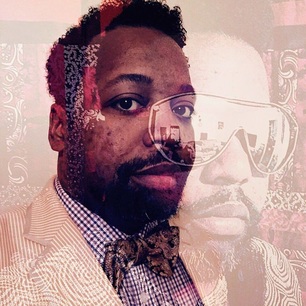
Mother King (MK) is a three act opera; it tells the story of Alberta Williams King who most people will recognize as the mother of Martin Luther King, Jr. We meet Alberta on the day that she is assassinated sitting at the organ at her home church of Ebenezer Baptist in Atlanta, GA but she is in between time and the timelessness, between heaven and earth, she is still flesh but is mostly spirit. The storytelling is nonlinear magical realism, Alberta embodies the leadership and inspiration of Black women. The audience witnesses her journey through Black birth, Black resilience, and Black joy. There are threads in terms of themes which comes through in Venessa Fuentes' poetry.
You wrote on your Facebook page that you use art “as a means to promote social consciousness.” What specifically are you promoting in Mother King?
One of the things I feel responsible for as an artist is lifting up stories that are not being heard, helping to magnify these stories through my own artistic creation is a way I feel I can promote social consciousness. Stories of people of color, especial women of color are the narratives not typically found in classical music. With Mother King, Venessa and I saw an opportunity to use opera to lift up the women of the Civil Rights movement. We had both seen Ava Duvenay's Selma and love the movie but we both felt that the voices of Black Women were written into the background of the story which happens too often. Through MK we are promoting the strength, beauty and power of Black women.
What kind of audience are you aiming to reach with Mother King?
With Mother King, I am aiming to reach those who truly desire to learn more about the richness of Black history and culture. I am also interested in new opera goes, those who may not see opera as representative of their own culture and narratives.
You have a wide range of musical influences, from Stevie Wonder and Miles Davis to Debussy and Satie. How have these and other musicians/composers influenced Mother King? What are some specific elements stemming from these influences that listeners can hear in the opera?
I am not sure if you will be able to hear the influences from the artists I listed in my list of influences. I certainly am influenced by serialist composers, I love the phrasing of Miles Davis' solos, the space he uses between the notes and the extended tonality. Certainly, I was inspired by the lyrical impressionism of Claude Debussy and his use of nontraditional scales, and the beautiful melancholy minimalism of Erik Satie... but what would you hear of these influences in Mother King. It's very difficult to say. I think the 15/16 and 17/16 alternating measures, I intended to demonstrate jazz phrasing in a new way as well as introduce a "skipping" technique which would be and influence from hip hop producer J Dilla. I had been fascinated with his style and familiar made unfamiliar by introducing a little microstep to the beat by focusing on the 16th note as a base, I can add steps in and take steps out to create space where a familiar rhythm or phrase sounds slightly off adding to the nonlinear magical realist storytelling. Everything is slightly out of sorts. I started out composing the music for MK in a very stylized, derivative way and found myself becoming more of an imitator than a composer. This wasn't working for me; I decided not to use period music and create serial clusters and motifs and built harmonic and melodic foundations from those.
Interview conducted by Evie Werger.
LOWERTOWN LISTENING SESSION
DAMEUN STRANGE
Studio Z: 275 East Fourth Street, Suite 200, St. Paul
Tickets: $10 • Tickets & Info
Lowertown Listening Sessions invite curious listeners to enjoy adventurous sounds and insightful conversation with the music-makers of our time. Held at Studio Z, Zeitgeist’s performance space in Lowertown St. Paul, this monthly happy hour series brings guest artists from all genres of new music (jazz, classical, world music, folk, and more) for performances and informal discussion in an after-work setting with food and beverages from Lowertown eateries.


 RSS Feed
RSS Feed
